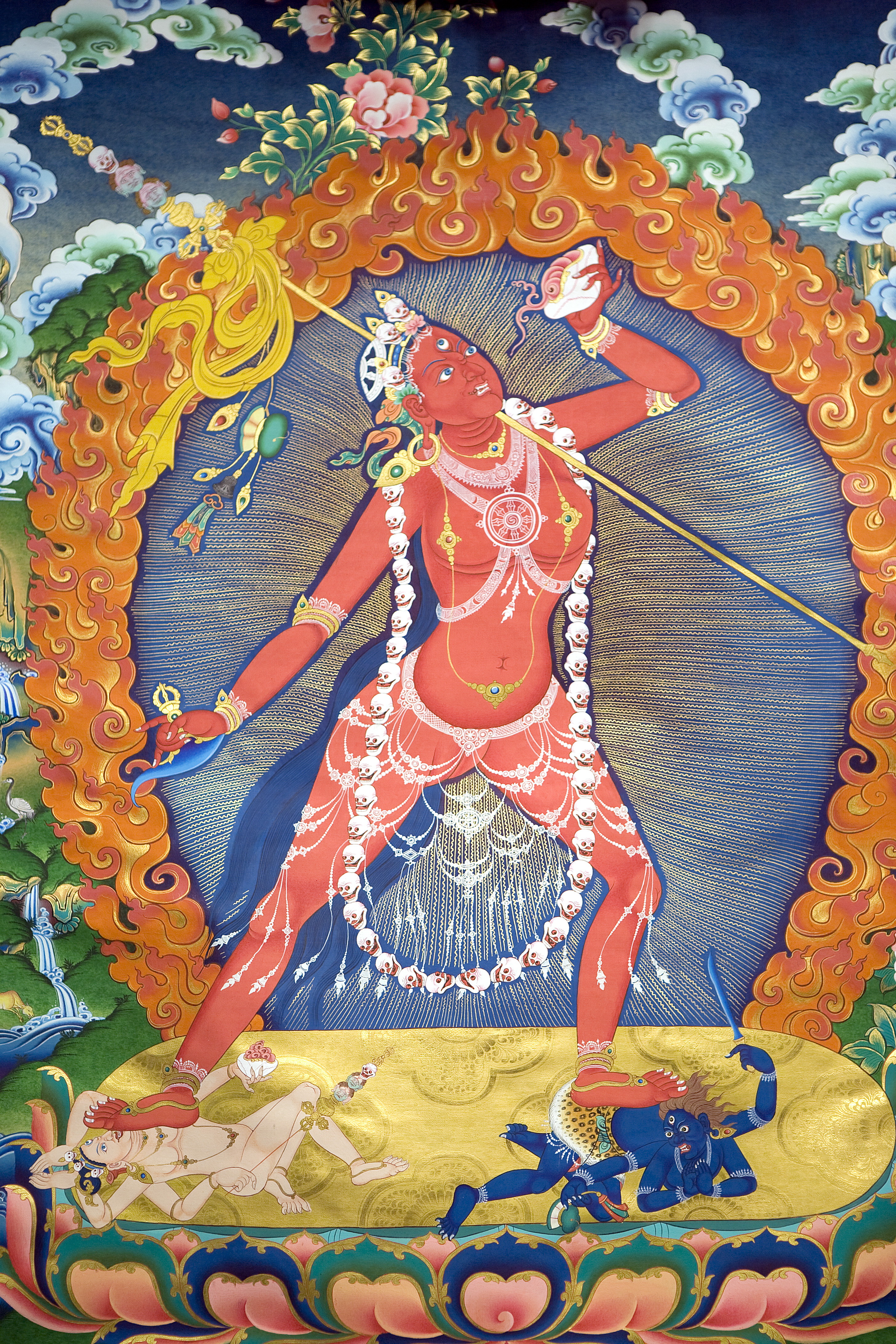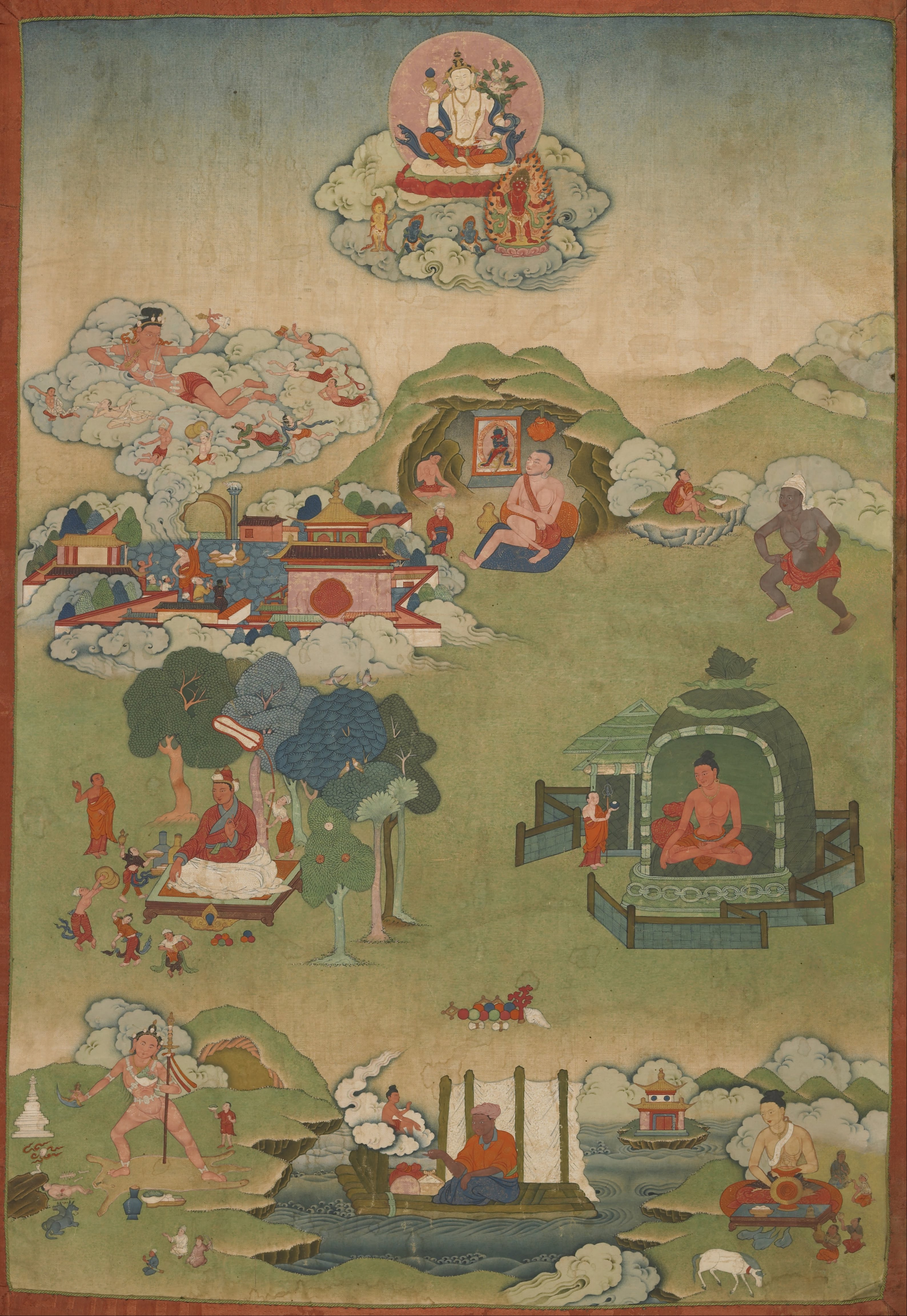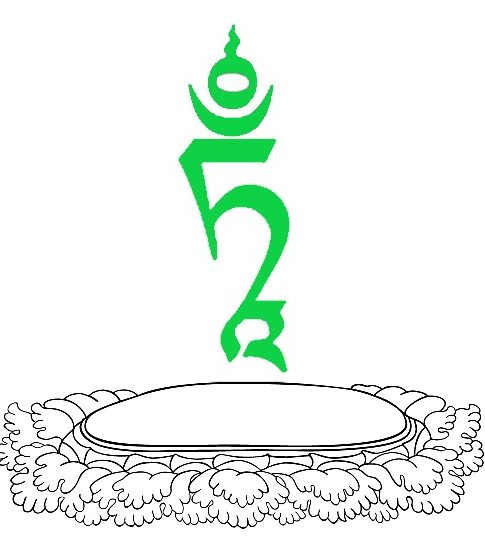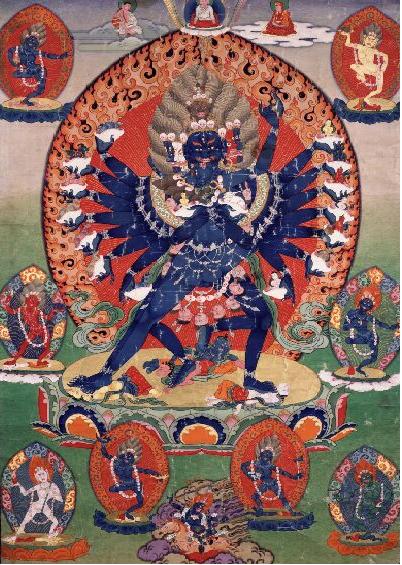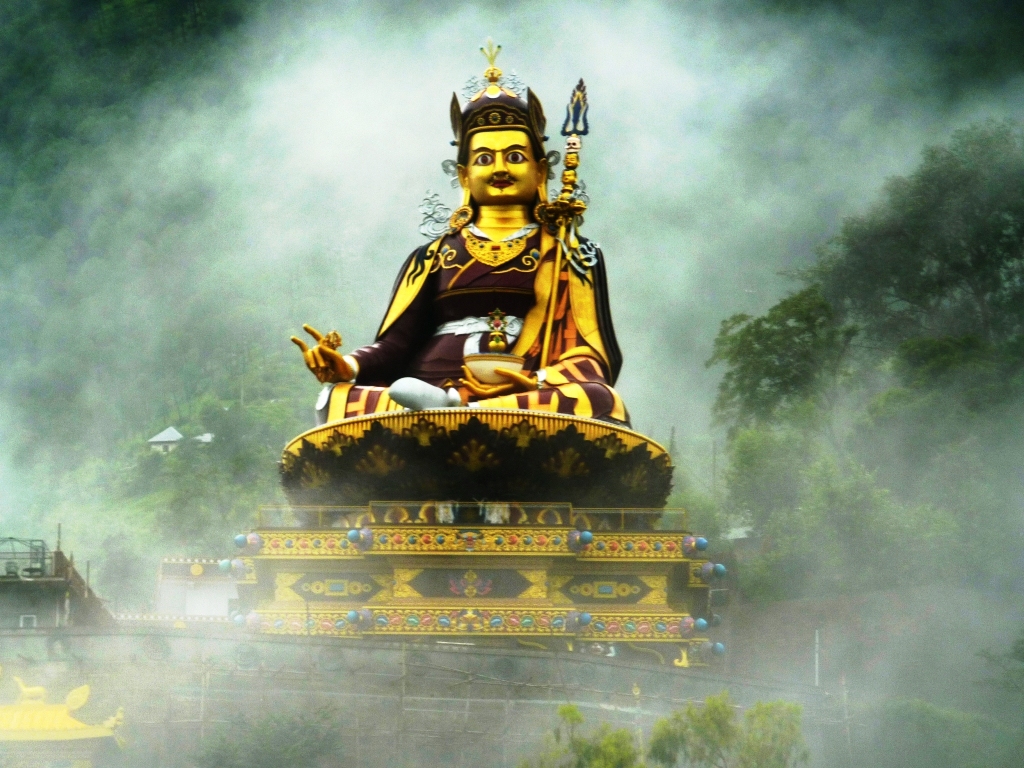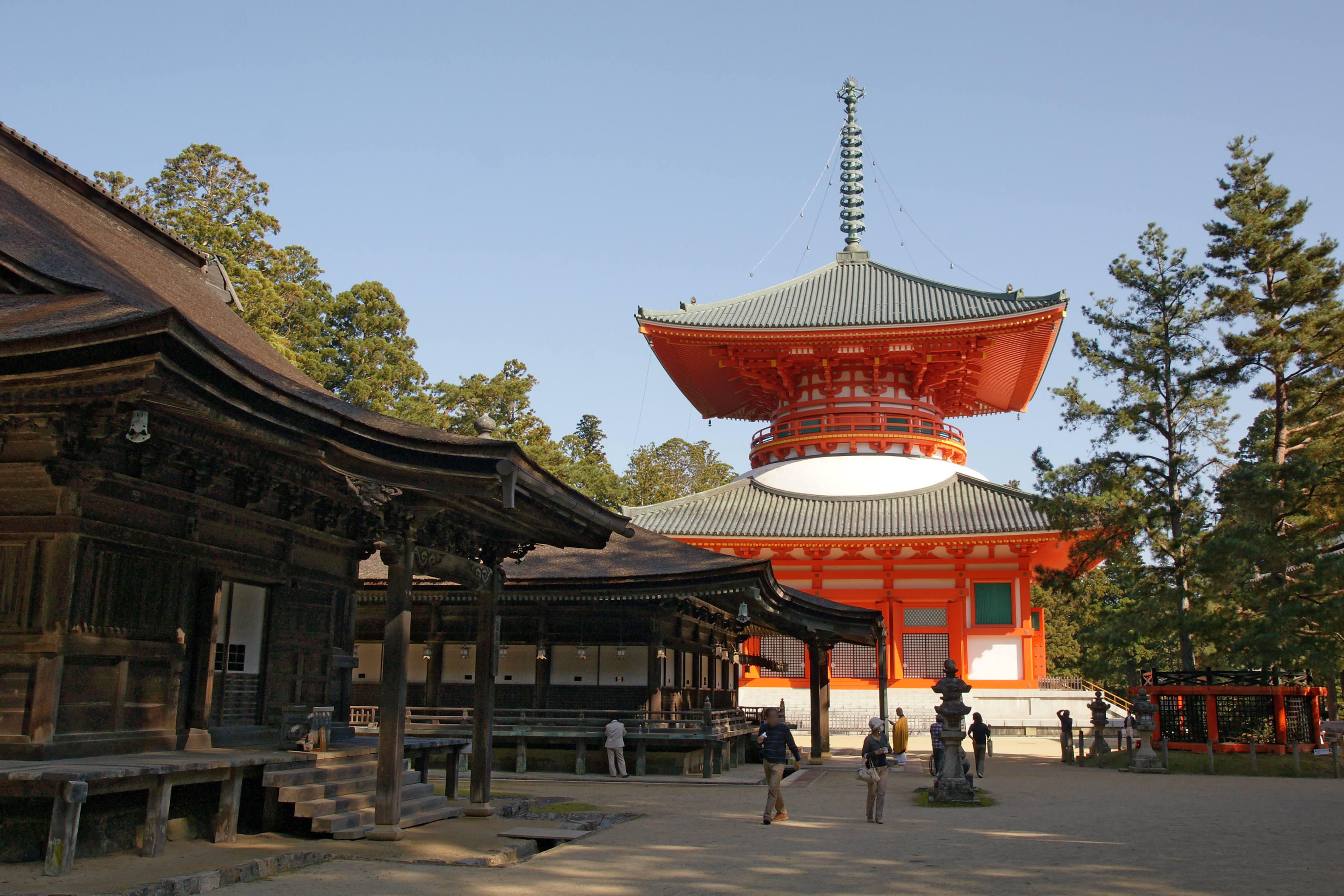|
Yidam
A ''yidam'' or ''iṣṭadevatā'' is a meditational deity that serves as a focus for meditation and spiritual practice, said to be manifestations of Buddhahood or enlightened mind. Yidams are an integral part of Vajrayana, including Tibetan Buddhism, Chinese Esoteric Buddhism and Shingon, which emphasize the use of esoteric practices and rituals to attain enlightenment more swiftly. The yidam is one of the three roots of the inner refuge formula and is also the key element of deity yoga. Yidam is sometimes translated by the term "tutelary deity". A yidam is considered to be a manifestation of enlightened qualities and a means to connect with specific aspects of the enlightened mind. The yidam is visualized during meditation in intricate detail, with the aim of internalizing its qualities and attributes. This practice is intended to facilitate the practitioner's transformation and realization of their own innate enlightened nature. It is believed to help purify the mind, ... [...More Info...] [...Related Items...] OR: [Wikipedia] [Google] [Baidu] |
Three Roots
In Tibetan Buddhism, the Three Jewels and Three Roots are supports in which a Buddhist takes refuge by means of a prayer or recitation at the beginning of the day or of a practice session. The Three Jewels are the first and the Three Roots are the second set of three Tibetan Buddhist refuge formulations, the ''Outer'', ''Inner'' and ''Secret'' forms of the Three Jewels. The 'Outer' form is the 'Triple Gem' (Sanskrit: ''triratna''), the 'Inner' is the Three Roots and the 'Secret' form is the 'Three Bodies' or trikāya of a Buddha. These are: * the Buddha, the fully enlightened one * the Dharma, the teachings expounded by the Buddha * the Saṅgha, the monastic order of Buddhism that practice the Dharma * the Lama (Sanskrit: ''guru'') is the 'root of blessing' or 'root of grace' * the Yidam (Sanskrit: ''ishtadevata'') is the 'root of methods' or 'root of accomplishments' * the Dakini or Dharmapala is the 'root of activity' or 'root of protection'. The additional refuge formulati ... [...More Info...] [...Related Items...] OR: [Wikipedia] [Google] [Baidu] |
Dakini
A ḍākinī (; ; ; ; alternatively 荼枳尼, ; 荼吉尼, ; or 吒枳尼, ; Japanese: 荼枳尼 / 吒枳尼 / 荼吉尼, ''dakini'') is a type of goddess in Hinduism and Buddhism. The concept of the ḍākinī somewhat differs depending on the context and the tradition. For example, in earlier Hindu texts and East Asian esoteric Buddhism, the term denotes a race of demonesses who ate the flesh and/or vital essence of humans. In Hindu Tantric literature, Ḍākinī is the name of a goddess often associated with one of the six chakras or the seven fundamental elements ('' dhātu'') of the human body. In Nepalese and Tibetan Buddhism, meanwhile, 'ḍākinī' (also wisdom ḍākinī) can refer to both what can be best described as fierce-looking female embodiments of enlightened energy, and to human women with a certain amount of spiritual development, both of whom can help Tantric initiates in attaining enlightenment. In Japan, the ḍākinīs – held in the East Asian Bud ... [...More Info...] [...Related Items...] OR: [Wikipedia] [Google] [Baidu] |
Vajrayogini
Vajrayoginī (; , Dorjé Naljorma) is an important figure in Buddhism, especially revered in Tibetan Buddhism. In Vajrayana she is considered a female Buddhahood, Buddha and a . Vajrayoginī is often described with the epithet ''sarvabuddhaḍākiṇī'', meaning "the [who is the Essence] of all Buddhas". She is an Anuttarayoga Tantra meditational deity (Iṣṭadevatā (Buddhism), iṣṭadevatā) and her practice includes methods for preventing ordinary death, intermediate state (bardo) and rebirth (Saṃsāra, samsara) by transforming them into paths to enlightenment, and for transforming all mundane daily experiences into higher spiritual paths. The origins of Vajrayoginī teachings date from between the 10th and 12th centuries, and draw inspiration from Hindu Tantra#Śaiva and Śākta tantra, Shaiva tantras. She appears as the consort of Padma Thotreng Tsal, and of Cakrasaṃvara, while in Vajrayoginī standalone practice, her inseparable consorts are represented by the kh ... [...More Info...] [...Related Items...] OR: [Wikipedia] [Google] [Baidu] |
Vajrayana
''Vajrayāna'' (; 'vajra vehicle'), also known as Mantrayāna ('mantra vehicle'), Guhyamantrayāna ('secret mantra vehicle'), Tantrayāna ('tantra vehicle'), Tantric Buddhism, and Esoteric Buddhism, is a Mahāyāna Buddhism, Mahāyāna Buddhist tradition that emphasizes Eastern esotericism, esoteric practices and rituals aimed at Sudden awakening, rapid spiritual awakening. Emerging between the 5th and 7th centuries CE in medieval India, Vajrayāna incorporates a Tibetan tantric practice, range of techniques, including the use of mantras (sacred sounds), dhāraṇīs (mnemonic codes), mudrās (symbolic hand gestures), mandalas (spiritual diagrams), and the visualization of Buddhist deities, deities and Buddhahood, Buddhas. These practices are designed to transform ordinary experiences into paths toward Enlightenment in Buddhism, enlightenment, often by engaging with aspects of Taṇhā, desire and Dvesha, aversion in a ritualized context. A distinctive feature of Vajrayāna is ... [...More Info...] [...Related Items...] OR: [Wikipedia] [Google] [Baidu] |
Kalachakra
''Kālacakra'' () is a Polysemy, polysemic term in Vajrayana, Vajrayana Buddhism and Hinduism that means "wheel of time" or "time cycles". "''Kālacakra''" is also the name of a series of Buddhist texts and a major practice lineage in History of Buddhism in India, Indian Buddhism and Tibetan Buddhism. The tantra is considered to belong to the unexcelled yoga (''Anuttarayoga Tantra, anuttara-yoga'') class. Kālacakra also refers both to a patron Tantra, tantric deity or yidam in Vajrayana and to the philosophies and yogas of the Kālacakra tradition. The tradition's origins are in India and its most active later history and presence has been in Tibet. The tradition contains teachings on cosmology, theology, philosophy, sociology, soteriology, myth, prophecy, Ayurveda, medicine and yoga. It depicts a mythic reality whereby cosmic and socio-historical events correspond to processes in the bodies of individuals. These teachings are meant to lead to a transformation of one's body and ... [...More Info...] [...Related Items...] OR: [Wikipedia] [Google] [Baidu] |
Deity Yoga
The fundamental practice of Vajrayana and Tibetan tantric practice, Tibetan tantra is deity yoga (''devatayoga''), a form of Buddhist meditation centered on a chosen deity or "cherished divinity" (Skt. ''Iṣṭa-devatā,'' Tib. ''yidam''). This involves the recitation of mantras and prayers alongside the detailed visualization of the deity and their mandala—a sacred configuration that includes their pure land, Buddha field, consorts, and attendant figures. The 14th-century scholar Tsongkhapa stated that deity yoga is the distinctive feature that sets Tantra apart from the Sutra-based path. In the highest class of Tantras, the Unsurpassed Yoga Tantras, deity yoga is typically practiced in two stages: the generation stage (''utpatti-krama'') and the completion stage (''nispanna-krama''). In the generation stage, practitioners dissolve ordinary perception into emptiness and then re-imagine reality through the form of a fully enlightened deity, understood as an expression of ulti ... [...More Info...] [...Related Items...] OR: [Wikipedia] [Google] [Baidu] |
Vajrakilaya
In Tibetan Buddhism, Vajrakilaya (, also ; or Vajrakumara (; ) is a wrathful heruka yidam deity who embodies the enlightened activity of all the Buddhas. His practice is known for being the most powerful for removing obstacles and destroying the forces hostile to compassion. Vajrakilaya is one of the eight deities of Kagyé. Vajrakilaya is a wrathful form of the Buddha Vajrasattva. His distinctive iconographic trait is that he holds the dagger called ''phurba'' or '' kīla''. Vajrakilaya is commonly represented with three faces of different colors in a crown of skulls. The central face is blue, the left is red and the right is white. He also has six arms: two hold the ''phurba'', two hold one ''vajra'' each, one holds a flaming snare, and one a trident. He crushes under his feet demons representing the obstacles to spiritual realization. As deity Vajrakilaya is a significant Vajrayana deity who transmutes and transcends obstacles and obscurations. Padmasambhava achieved realis ... [...More Info...] [...Related Items...] OR: [Wikipedia] [Google] [Baidu] |
Tibetan Buddhism
Tibetan Buddhism is a form of Buddhism practiced in Tibet, Bhutan and Mongolia. It also has a sizable number of adherents in the areas surrounding the Himalayas, including the Indian regions of Ladakh, Gorkhaland Territorial Administration, Darjeeling, Sikkim, and Arunachal Pradesh, as well as in Nepal. Smaller groups of practitioners can be found in Central Asia, some regions of China such as Northeast China, Xinjiang, Inner Mongolia and some regions of Russia, such as Tuva, Buryatia, and Kalmykia. Tibetan Buddhism evolved as a form of Mahayana, Mahāyāna Buddhism stemming from the latest stages of Indian Buddhism (which included many Vajrayana, Vajrayāna elements). It thus preserves many Indian Buddhist Tantra, tantric practices of the Gupta Empire, post-Gupta Medieval India, early medieval period (500–1200 CE), along with numerous native Tibetan developments. In the pre-modern era, Tibetan Buddhism spread outside of Tibet primarily due to the influence of the Mongol Emp ... [...More Info...] [...Related Items...] OR: [Wikipedia] [Google] [Baidu] |
Hevajra
Hevajra ( Tibetan: kye'i rdo rje / kye rdo rje; Chinese: 喜金剛 Xǐ jīngāng / 呼金剛 Hū jīngāng;) is one of the main yidams (enlightened beings) in Tantric, or Vajrayana Buddhism. Hevajra's consort is Nairātmyā ( Tibetan: bdag med ma). History India The Hevajra Tantra, a ''yoginītantra'' of the '' anuttarayogatantra'' class, is believed to have originated between the late 8th (Snellgrove), and the late 9th or early 10th (Davidson), centuries in eastern India, possibly Kamarupa. Tāranātha lists Saroruha and Kampala (also known as Lva-va-pā, Kambhalī, and Śrī-prabhada") as its "bringers": . . . the foremost yogi Virupa meditated on the path of Yamāri and attained siddhi under the blessings of Vajravārāhi, . . . His disciple Dombi Heruka..understood the essence of the Hevajra Tantra, and composed many śāstras like the ''Nairātmā-devi-sādhana'' and the ''Sahaja-siddhi''. He also conferred abhiṣeka on his own disciples. After this, two ācār ... [...More Info...] [...Related Items...] OR: [Wikipedia] [Google] [Baidu] |
Mandala
A mandala (, ) is a geometric configuration of symbols. In various spiritual traditions, mandalas may be employed for focusing attention of practitioners and adepts, as a spiritual guidance tool, for establishing a sacred space and as an aid to meditation and trance induction. In the Eastern religions of Hinduism, Buddhism, Jainism and Shinto it is used as a map representing deities, or especially in the case of Shinto, paradises, kami or actual shrines. Hinduism In Hinduism, a basic mandala, also called a '' yantra'', takes the form of a square with four gates containing a circle with a centre point. Each gate is in the general shape of a T. Mandalas often have radial balance. A '' yantra'' is similar to a mandala, usually smaller and using a more limited colour palette. It may be a two- or three-dimensional geometric composition used in '' sadhanas'', puja or meditative rituals, and may incorporate a mantra into its design. It is considered to represent the abode ... [...More Info...] [...Related Items...] OR: [Wikipedia] [Google] [Baidu] |
Padmasambhava
Padmasambhava ('Born from a Lotus'), also known as Guru Rinpoche ('Precious Guru'), was a legendary tantric Buddhist Vajracharya, Vajra master from Oddiyana. who fully revealed the Vajrayana in Tibet, circa 8th – 9th centuries... He is considered an emanation or Nirmāṇakāya of Gautama Buddha, Shakyamuni Buddha as foretold by the Buddha himself. According to early Tibetan sources including the ''Testament of Ba'', he came to Tibet in the 8th century and designed Samye Monastery, the first Buddhist monastery in Tibet during the reign of King Trisong Detsen. He, the king, and Khenpo Shantarakshita are also responsible for creating the Tibetan canon, Tibetan Canon through translating all of the Buddha's teachings and their commentaries into the Tibetan language. According to Lewis Doney, while his historical authenticity was questioned by earlier Tibetology, Tibetologists, it is now "cautiously accepted.” Padmasambhava himself was recorded as saying he was an historical per ... [...More Info...] [...Related Items...] OR: [Wikipedia] [Google] [Baidu] |
Shingon
is one of the major schools of Buddhism in Japan and one of the few surviving Vajrayana lineages in East Asian Buddhism. It is a form of Japanese Esoteric Buddhism and is sometimes called "Tōmitsu" (東密 lit. "Esoteric [Buddhism] of Tō-ji"). The word ''shingon'' is the Kan-on, Japanese reading of the Traditional Chinese characters, Chinese word ('), which is the translation of the Sanskrit word mantra. The Chinese Esoteric Buddhism, Zhēnyán lineage was founded in China (c. 7th–8th centuries) by Indian Vajracharya, vajrācāryas (esoteric masters) like Śubhakarasiṃha, Vajrabodhi and Amoghavajra. These esoteric teachings would later flourish in Japan under the auspices of a Buddhist monk named Kūkai (, 774–835), who traveled to Tang dynasty, Tang China and received these esoteric transmissions from a Chinese master named Huiguo (746–805). Kūkai established his tradition at Mount Kōya (in Wakayama Prefecture), which remains the central pilgrimage center of Sh ... [...More Info...] [...Related Items...] OR: [Wikipedia] [Google] [Baidu] |


